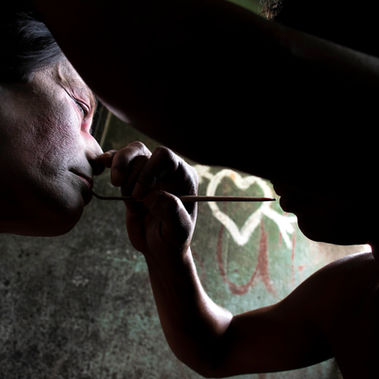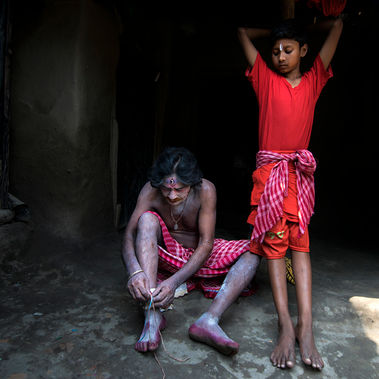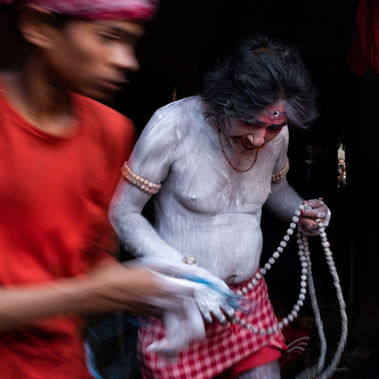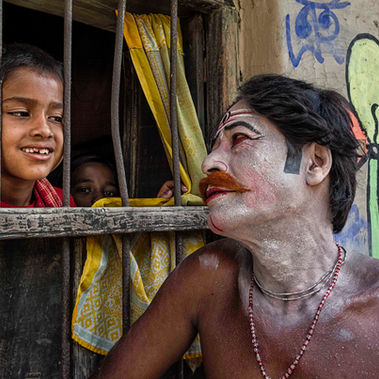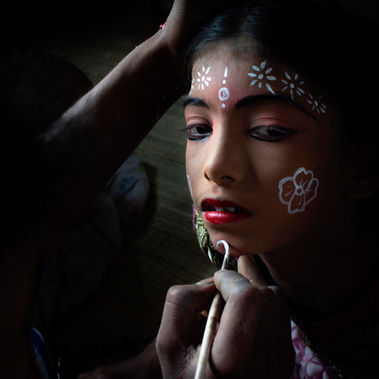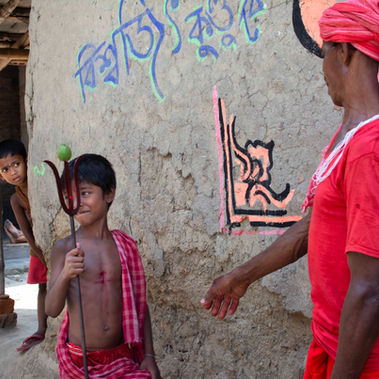Photography
Painted Canvas of Gajan
"Baba Taraknath er seva lage.....Mahadevvvvvvvvvv! Bom! Bom!"
Seemed like a war cry, but it was not. It was a loud chant by ill clad godmen from the backward classes draped in red cloth and garlands seeking alms during the last month of the Bengali calendar, "Chaitra" that concludes with the festivities of "Gajan".
Amongst various folk festivals of the Bengali Hindu's, "Gajan " occupies a very special place primarily for the various rituals involved with it. The name might have originated from the bengali word "garjan" meaning a load roar, or may be from combining the words Ga (meaning village) and Jon (meaning people) which indicates the festival of the village people. Started centuries ago, it can briefly be stated that this involves worshipping either Dharmathakur, resembled by a stone and believed to have originated from Buddhism (Dharmer Gajan) or Lord Shiva at places (Shiv er Gajan).
Though beliefs and sources differ, the root remains common. It is celebrated by people from the Bauri, Bagdi, Dom, Hari and other backward communities who are directly or indirectly related to agriculture and cultivation. They seek blessings from the Almighty for sufficient rain, restoring the fertility of soil and eventually a good harvest. It might be noted in this regard that Dharmathakur is considered to be the God of fertility.






